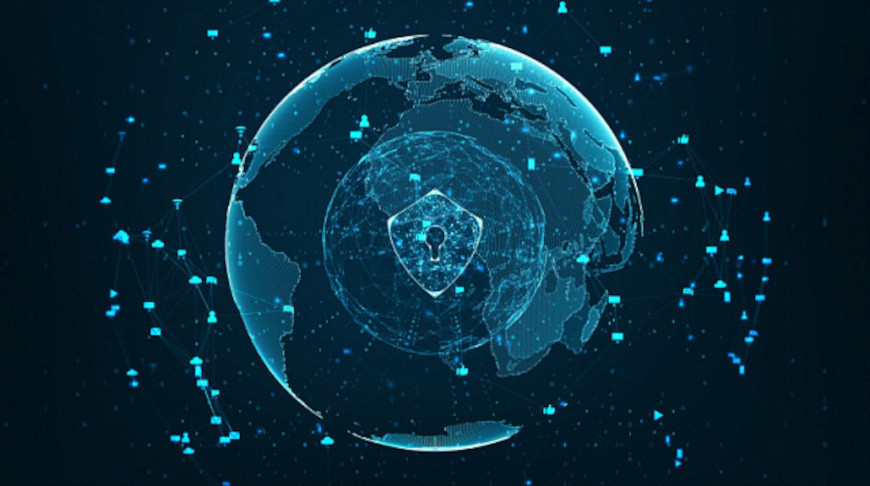BRICS and Cybersecurity: protecting shared digital space

Photo: iStock
MOSCOW, 8 August (BelTA — TV BRICS) — According to the United Nations,
the number of cyberattacks worldwide is growing by an average of 80 per
cent each year. Every day, government bodies, industrial facilities, the
energy sector, housing and utilities, transport systems, universities,
banks, and shops are under threat — virtually any company or
organisation may be at risk.
Analysts are observing a worrying
trend: modern cybercriminals generally recognise no borders — those who
plan and carry out attacks online employ advanced technologies, cause
more damage than before, and remain undetected for longer.
Regionally,
according to open-source information, the most frequently targeted
areas by cyberattacks in the first quarter of 2025 were countries in
Latin America and the African continent.
The global problem of
digital security requires collective solutions and consolidated efforts
to prevent cyber threats. According to experts, BRICS cooperation in
this field is becoming a model for the entire world. They highlight the
grouping’s key role in shaping an intergovernmental internet space based
on the principles of virtual sovereignty.
Multifaceted cybercrime
The National Committee for BRICS Research provides the following data:
In Brazil, cybercriminals often counterfeit e-commerce platforms and telecom operators to steal login credentials;
In Russia, a common tactic is for attackers to pose as employees of public service organisations;
In South Africa, internet fraudsters frequently target individuals looking to profit from investments;
India is among the top 10 countries globally in terms of spam distribution;
The
United Arab Emirates ranks among the top three countries worldwide for
the cost of data breaches. Damage to the Gulf monarchies amounts to
billions of dollars, with such cybercrimes largely targeting access to
commercial, technological, and state secrets.
However, it is
inaccurate to claim that any single type of cyber threat is unique to a
particular country. That is why, regardless of geography, territorial
size, economic development, or population, countries are equally
interested in developing joint approaches and applying them in practice.
In
September 2024, during Russia’s BRICS Chairmanship, at a meeting with
BRICS representatives responsible for security matters, Russian
President Vladimir Putin announced the creation of a special electronic
register for data sharing on cyberattacks and incidents and highlighted
that the decision to establish a BRICS+10 council to combat terrorism
financing and money laundering was nearing final approval.
Russia: making crime-proof systems
Delivering
a report in 2024 at a BRICS meeting on combating digital crime,
Prosecutor General of the Russian Federation Igor Krasnov spoke about
the development of Russian software that helps prevent the criminal
circulation of cryptocurrency. This software is used in criminal
investigations and financial monitoring. In addition, law enforcement
officers have access to a wide range of domestic information and
analytical resources, which allows for the rapid collection, analysis,
and response to data — for example, blocking the transfer of assets
abroad or preventing hostile takeovers of enterprises.
In an
exclusive comment to TV BRICS, Candidate of Economic Sciences Lilia
Aleeva noted that Russia is now actively building working contacts with
other BRICS members at various levels, implementing multilateral
cooperation mechanisms in digitalisation. According to Aleeva, BRICS
offers new opportunities for the use of Russian information and
communication technologies, including those applied in training
specialists in the field of cybersecurity.
Iran’s natural path and artificial intelligence
Even
before joining BRICS, the Islamic Republic of Iran was concerned with
how best to apply advanced technologies in countering international
hacker groups. Today, artificial intelligence systems allow the country
to identify suspects’ faces, gather and assess social media data, and
detect both obvious and covert cybercriminal communications far more
effectively — hundreds or even thousands of times more so — than human
analysts alone.
A flagship project of the Iranian authorities is
the National Information Network. Development of an “internet within the
internet” in the republic has been ongoing for over a decade. The
Shahkar identification system (meaning “masterpiece” in Farsi) was also
created to fight online crime; it tracks senders and recipients of data
via IP addresses.
This has helped reduce the scale of cyber
threats, though not eliminate them entirely. Analysts note that the
primary method currently used by digital criminals to attack
organisations and individuals in Iran — as across much of the Middle
East — is malicious software.
Globally, there is a trend away
from DDoS attacks and towards cyberattacks based on social engineering
(manipulating human psychology rather than exploiting technical flaws to
coerce victims into certain actions). This is explained by hacktivism
(drawing public attention to social, political, and other issues) and
the financial motives of criminals: stealing confidential data or
encrypting company files can be monetised, unlike merely disabling
websites or infrastructure.
In an exclusive comment for TV BRICS,
political analyst of the Islamic Republic of Iran, Roohollah Modabber,
emphasised that after joining BRICS, the Iranian government should
include plans for cooperation in the field of cybersecurity in its
national priorities, enabling Iran — with support from its BRICS
partners — to strengthen its digital sovereignty.
South Africa: virtual means real
South
Africa is a country with enormous development potential, which has
naturally led to the adoption of digital technologies. Their use is
transforming society, the economy, governance structures, and the ways
in which people communicate and conduct transactions. This new life in
South Africa needs to be regulated legally. The legislative framework
must ensure national security — including in areas such as blockchain
and the Internet of Things.
Candidate of Economic Sciences and
Associate Professor of the Department of Strategic and Innovative
Development of the Financial University under the Government of the
Russian Federation, Mikhail Khachaturyan, in an exclusive comment to TV
BRICS, stated that South Africa today ensures cybersecurity through
legislation, organisational structures, technology, and international
cooperation. According to him, the aim is to protect computer systems,
networks, software, and data and to prevent cybercrime incidents.
The expert highlighted the following key initiatives:
The
Protection of Personal Information Act (POPIA), which regulates the
handling of personal data by public and private entities;
The Cybercrimes Act, which criminalises hacking, identity theft, and cyberbullying.
According to Khachaturyan, notable technological solutions adopted by both the state and businesses include:
The use of SIEM systems together with XDR and NTA solutions to improve protection and enable rapid threat response;
Implementation of bug bounty programmes to help developers identify and fix vulnerabilities before they are exploited;
Cybersecurity training for employees in both government agencies and private companies.
He
believes South Africa’s sound approach to creating a secure digital
environment lies in consistent work at the national, regional, and
international levels. One example is its participation in the AfricaCERT
forum, which has established a community of professionals across the
continent. These experts understand how to respond to incidents, develop
appropriate tools and standards, and liaise with policymakers.
Meanwhile,
Ndivhuho Tshikovhi, a research fellow at Durban University of
Technology (DUT), told TV BRICS that South Africa has made certain
progress in its pursuit of digital sovereignty in recent years. In line
with the National Cybersecurity Strategy (2015) and the Cybercrimes Act
(2020), the following have been established:
A digital hub and the ECS-CSIRT (Computer Security Incident Response Team) under the State Security Agency (SSA);
A cyber command within the South African military;
A state-owned company responsible for protecting government communications from unauthorised access (COMSEC).
According
to Tshikovhi, the Council for Scientific and Industrial Research (CSIR)
in South Africa also hosts a Virtual Cybersecurity Monitoring Centre
and an Early Warning System for cybercrime.
In his view, South
Africa is actively engaging in joint exercises and cyber diplomacy
platforms within BRICS, particularly through South–South cooperation
mechanisms (sharing resources, technology, and knowledge among countries
of the Global South).
The country’s authorities are convinced
that effectively combating hacker groups operating from foreign
jurisdictions requires international cooperation, extradition
agreements, and a sensitive approach to gathering and preserving digital
evidence. At the same time, South Africa prioritises privacy and human
rights protection — even in the age of rapid innovation.
BRICS and the UN: shared vision
At
the 17th BRICS Summit, the leaders of the grouping voiced their support
for the adoption of the United Nations Convention against Cybercrime —
the first universal international treaty on information security. The
document had been in development for five years. It aims to counter
unauthorised access to and interception of electronic data; forgery,
theft, or fraud; laundering the proceeds of criminal activity; the
sexual exploitation and abuse of minors; and the distribution of child
pornography, while also supporting and protecting victims of
cybercriminals.
“We note the important contribution of the BRICS
countries to the adoption of the Convention since the proposal for its
development was made. We call on all states to sign the Convention at
the earliest opportunity — in Hanoi in 2025 — and ratify it as soon as
possible in accordance with their national laws, procedures, and
processes to ensure its early entry into force,» the summit declaration
states.
The declaration also mentions the relevance of an
additional protocol to the Convention, which should cover further
criminal offences, including the use of information and communication
technologies for terrorist and extremist purposes, as well as for the
trafficking of drugs and weapons.


